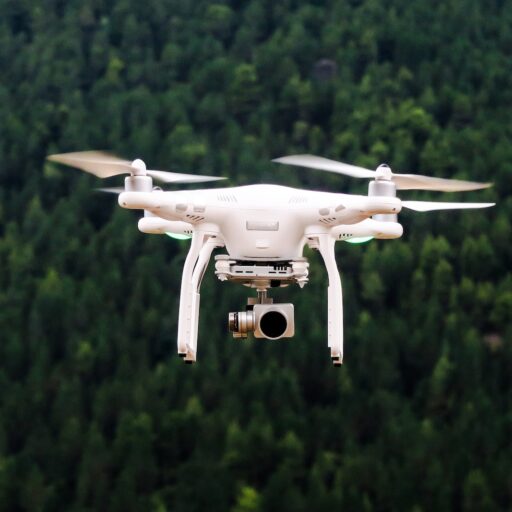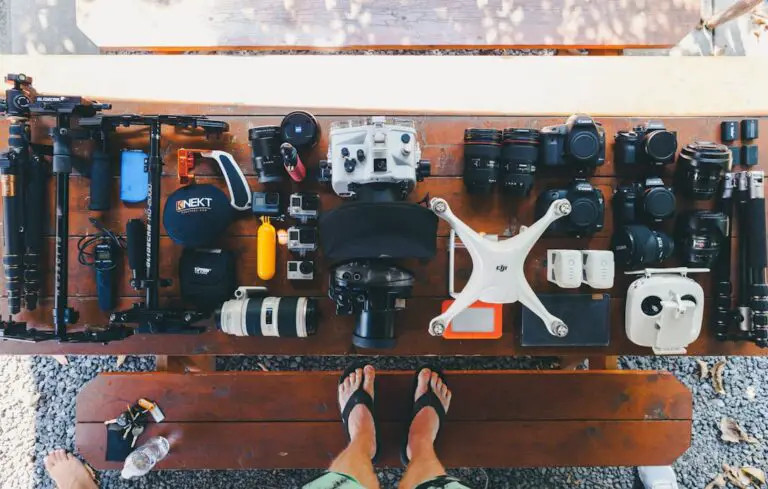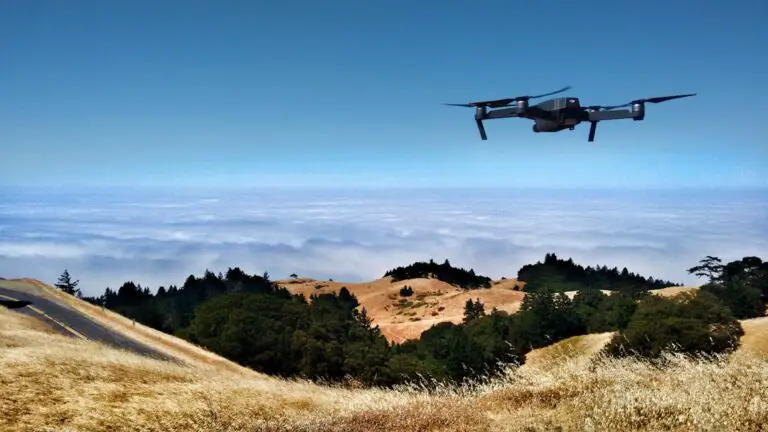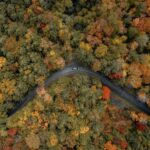Support our educational content for free when you purchase through links on our site. Learn more
Is a Drone Business Profitable? 12 High-Earning Niches in 2025 🚁
Thinking about turning your drone hobby into a money-making machine? You’re not alone. The commercial drone industry is buzzing with opportunity, but is a drone business truly profitable in 2025 — or just a pricey pastime? At Drone Brands™, we’ve logged thousands of flight hours, navigated regulatory skies, and helped pilots like you launch thriving enterprises. Spoiler alert: the drone business can be highly lucrative, but only if you know where to focus, how to price your services, and which niches are soaring above the rest.
In this comprehensive guide, we’ll break down the top 12 drone business opportunities that deliver the best ROI, reveal startup costs and ongoing expenses, and share insider tips on scaling your operation. Curious about which drone models and software tools give you the competitive edge? We’ve got you covered. Ready to find out if your drone can pay the bills? Keep reading — your profitable flight plan starts here.
Key Takeaways
- The commercial drone market is booming, expected to surpass $60 billion globally by 2030, creating vast opportunities.
- Specialization is key: Niches like infrastructure inspection, precision agriculture, and mapping command premium rates.
- Startup costs vary widely, from a lean $3,000 setup for real estate photography to $25,000+ for advanced industrial services.
- Certification and compliance matter: FAA Part 107 certification and insurance are non-negotiable for legal and safe operations.
- Marketing and client relationships drive success: Building a compelling portfolio and networking are essential to grow your business.
- Scaling requires hiring, investing in specialized gear, and forming strategic partnerships to expand your reach and revenue.
Ready to take off? Dive into our detailed breakdown and discover how to turn your drone into a profitable business powerhouse in 2025!
Table of Contents
- ⚡️ Quick Tips and Facts
- 🚁 Soaring into Success: A Brief History of Commercial Drone Operations
- 💰 Unpacking the Profit Potential: Is a Drone Business Really a Goldmine?
- 🚀 Top 12 High-Flying Drone Business Opportunities for Maximum ROI
- Real Estate Photography & Videography: Capturing Dream Homes from Above 🏡
- Construction Site Monitoring & Progress Tracking: Building Smarter, Not Harder 🏗️
- Agricultural Drone Services: Precision Farming for Bountiful Harvests 🌾
- Infrastructure Inspection: Eyes in the Sky for Critical Assets 💡
- Mapping & Surveying: GIS Data Collection with Unmatched Accuracy 🗺️
- Aerial Cinematography & Event Coverage: Hollywood-Level Shots for Every Occasion 🎬
- Public Safety & Emergency Response Support: Drones as First Responders 🚨
- Delivery Services: The Future of Logistics is Airborne 📦
- Thermal Imaging & Industrial Inspections: Spotting the Unseen 🔥
- Environmental Monitoring & Wildlife Conservation: Guardians of Our Planet 🌳
- Roof Inspections & Insurance Claims: Safer, Faster, Smarter Assessments 🏠
- Drone Training & Consulting: Sharing Your Expertise and Earning 🎓
- 🛠️ Essential Gear for Your Drone Business: Investing Wisely for Success
- ⚖️ Legal & Regulatory Hurdles: Flying by the Book and Staying Compliant
- 📈 Building Your Brand & Marketing Your Drone Services: Attracting Your Ideal Clients
- ⚠️ Common Pitfalls & How to Avoid Them: Lessons from the Air
- Underestimating Startup Costs & Overestimating Early Revenue
- Ignoring Niche Specialization: Trying to Be Everything to Everyone
- Lack of Business Acumen: More Than Just Flying a Drone
- Poor Client Communication & Deliverables: Grounding Your Reputation
- Neglecting Safety Protocols & Maintenance: A Recipe for Disaster
- 🚀 Scaling Your Drone Business: From Solo Pilot to Enterprise Fleet
- 🔮 The Future of Drone Profitability: Trends & Innovations Shaping the Sky
- ✅ Is a Drone Business Worth the Investment? Our Expert Verdict
- Conclusion
- Recommended Links
- FAQ
- Reference Links
Alright, buckle up, buttercups! The team here at Drone Brands™ gets asked one question more than any other: “Can you actually make good money flying drones, or is it just a glorified hobby?” You see the slick aerial shots in movies and the futuristic delivery bots on the news, and you think, “I want a piece of that billion-dollar pie!” 🥧
Well, we’re here to pull back the curtain. We’ve been in the trenches, flown in gusty winds, dealt with curious seagulls, and—most importantly—cashed the checks. The short answer? Yes, a drone business can be incredibly profitable. But—and this is a big but—it’s not as simple as buying a drone and watching the money roll in.
So, is launching a drone business in 2025 your golden ticket, or a flight path to frustration? Let’s get into it.
⚡️ Quick Tips and Facts
Before we dive deep, here are some high-altitude takeaways to get you oriented:
- The Market is BOOMING: The global commercial drone market is projected to soar, with some estimates suggesting it will reach over $60 billion by 2030. This growth is fueled by huge advancements in AI, better sensors, and wider adoption in key sectors.
- Income Varies Wildly: A full-time commercial drone pilot can make anywhere from $50,000 to over $100,000 annually. However, freelance hourly rates can range from $50 to over $300, depending on the complexity of the job and your expertise.
- Niche Down to Scale Up: The money is in specialization. While real estate photography is a popular entry point, it’s also crowded. Highly profitable areas include industrial inspections, precision agriculture, and certified mapping and surveying.
- Startup Costs are Scalable: You don’t need a $20,000 rig to get started. A solid drone business can be launched for as little as $2,000 to $5,000, covering a quality prosumer drone, licensing, and basic insurance.
- Certification is Non-Negotiable: In the U.S., you must have an FAA Part 107 certificate to operate a drone commercially. Think of it as your license to print money (legally).
🚁 Soaring into Success: A Brief History of Commercial Drone Operations
Remember when drones were either top-secret military tech or flimsy toys that would shatter on their first flight? It wasn’t that long ago! For years, the idea of using a drone for business was a regulatory nightmare wrapped in a technological puzzle.
The game truly changed in 2016 when the FAA introduced the Part 107 rule in the United States. This was the watershed moment, creating a clear pathway for entrepreneurs to legally fly drones for commercial purposes. Suddenly, what was once a niche hobby became a legitimate and accessible industry.
Initially, the field was dominated by photographers and videographers. But as technology evolved at a breakneck pace, so did the applications. Drones became smaller, smarter, and equipped with incredible sensors—thermal cameras, LiDAR, multispectral imagers. This technological leap unlocked a universe of drone business opportunities, transforming industries from agriculture to public safety. Today, we’re at a point where drones aren’t just capturing data; they’re providing actionable insights that save companies time, money, and even lives.
💰 Unpacking the Profit Potential: Is a Drone Business Really a Goldmine?
So, let’s talk cash. Is this business a steady paycheck or a risky gamble? The truth is, it’s a bit of both, and your success hinges on treating it like a real business, not just a weekend passion project. As one industry expert notes, success requires a blend of technical drone skills and sharp business acumen.
Understanding Revenue Streams: Where Does the Money Come From?
Your income as a drone pilot won’t come from a single source. It’s all about diversifying your flight plan.
- Project-Based Gigs: This is the most common model. A real estate agent needs a property shoot, a construction firm wants a one-time site survey, or a couple wants epic aerials of their wedding. These jobs can pay anywhere from a few hundred to several thousand dollars. Simple real estate photo packages might fetch $200-$500, while a complex industrial inspection could net you well over $2,000.
- Retainers and Long-Term Contracts: This is the holy grail. Think of a large construction company that needs weekly progress reports for a year-long project or a farm that requires monthly crop health analysis. These contracts provide steady, predictable income and are the foundation of a stable business.
- Data Analysis and Consulting: Don’t just be a pilot; be a problem-solver. The real value isn’t always in the pretty pictures but in the data they contain. Offering services like creating 3D models, analyzing thermal data for energy loss, or providing volumetric measurements for mining operations commands a premium.
- Stock Footage Sales: Have some breathtaking shots of your city or a stunning landscape? Selling them on platforms like Getty Images or Adobe Stock can create a nice passive income stream.
Crunching the Numbers: Typical Drone Business Startup Costs
Starting a drone business doesn’t have to break the bank, but you need to be realistic. Costs can range from a lean $3,500 to over $25,000, depending on your chosen niche. Here’s a breakdown of what you should budget for.
| Cost Category | Lean Startup (e.g., Real Estate) | Pro-Level (e.g., Surveying/Inspection) |
|---|---|---|
| Drone Hardware | $1,500 – $3,000 (e.g., DJI Air 3, Autel EVO Lite+) | $10,000 – $25,000+ (e.g., DJI Matrice 350 RTK, senseFly eBee) |
| Licensing & Training | $175 – $500 (Part 107 exam fee + study materials) | $1,000 – $3,000+ (Advanced courses, thermography certs) |
| Insurance | $500 – $1,000 annually (Liability insurance) | $2,500 – $5,000+ annually (Higher liability + hull insurance) |
| Software | $200 – $600 annually (Editing software like Adobe, basic flight apps) | $1,200 – $3,000+ annually (Pix4D, DroneDeploy, specialized analysis tools) |
| Business & Marketing | $500 – $1,500 (LLC registration, website, business cards) | $3,000 – $7,000+ (Professional branding, targeted ads, SEO) |
| Total Estimated Cost | ~$2,875 – $6,600 | ~$17,700 – $43,000+ |
As Drone Launch Academy wisely advises, it’s smart to start small with a single, high-quality drone to minimize your initial investment.
Ongoing Operational Expenses: Keeping Your Drones in the Air
Your spending doesn’t stop after the initial setup. Remember to factor these recurring costs into your pricing structure:
- Insurance Premiums: This is a non-negotiable annual cost.
- Software Subscriptions: Most professional mapping and editing software operate on a monthly or yearly subscription model.
- Equipment Maintenance & Upgrades: Props break, batteries degrade, and technology advances. Set aside a fund for repairs and for upgrading your gear every couple of years.
- Marketing & Advertising: Whether it’s running social media ads or attending industry trade shows, you’ll need a budget to keep the client pipeline full.
- Transportation: Fuel and vehicle wear-and-tear add up as you travel to and from job sites.
The Break-Even Point: When Do You See Green?
So, when do you actually start making a profit? Let’s imagine you went with a lean startup model costing around $4,000. If your average real estate photography job nets you $300 in profit (after accounting for time, travel, etc.), you’d need to complete about 14 jobs to break even. For a motivated pilot, that’s entirely achievable within the first few months.
The key is to price your services correctly from the start, factoring in not just your time on-site but also travel, editing, administrative work, and all those ongoing expenses.
🚀 Top 12 High-Flying Drone Business Opportunities for Maximum ROI
The secret to a profitable drone business is finding the right niche. While you can start as a generalist, specializing allows you to become the go-to expert and command higher rates. Here are some of the most lucrative drone business ideas our team has seen explode in recent years.
-
Real Estate Photography & Videography: Capturing Dream Homes from Above 🏡
This is the bread-and-butter for many drone pilots. Aerial shots provide a perspective that can make a property listing pop, showcasing the entire property, its surroundings, and unique features.
- Profit Potential: ✅ High volume, moderate pay per job.
- Insider Tip: Offer package deals that include interior photos, a virtual tour, and aerial video to become a one-stop shop for real estate agents.
-
Construction Site Monitoring & Progress Tracking: Building Smarter, Not Harder 🏗️
Construction firms pay top dollar for weekly or bi-weekly aerial progress reports. These images help project managers track progress, manage resources, and keep stakeholders informed.
- Profit Potential: ✅ Excellent for recurring revenue.
- Insider Tip: Learn to use mapping software like DroneDeploy to create orthomosaic maps and 3D models of the site, adding immense value.
-
Agricultural Drone Services: Precision Farming for Bountiful Harvests 🌾
Drones equipped with multispectral sensors can assess crop health, identify irrigation issues, and help farmers apply pesticides or fertilizers with surgical precision. This saves farmers a fortune and boosts yields.
- Profit Potential: ✅ High value, specialized work.
- Insider Tip: Partner with local agronomists. They can help interpret the data you collect, making your service invaluable to farmers.
-
Infrastructure Inspection: Eyes in the Sky for Critical Assets 💡
Forget dangerous rope access or expensive helicopters. Drones can safely and efficiently inspect bridges, cell towers, power lines, and wind turbines.
- Profit Potential: ✅ Extremely high-paying, but requires advanced skills and equipment.
- Insider Tip: Get certified in specific inspection standards (like thermal imaging) to be trusted with these critical jobs.
-
Mapping & Surveying: GIS Data Collection with Unmatched Accuracy 🗺️
This is a game-changer for land developers, environmental agencies, and city planners. Drones with RTK/PPK capabilities can create survey-grade maps with centimeter-level accuracy for a fraction of the cost of traditional methods. As one source puts it, you can “charge premium rates for detailed geospatial data, making it one of the most profitable sectors.”
- Profit Potential: ✅ Very high, requires technical expertise.
- Insider Tip: Earning a Certified Survey Technician (CST) credential can open doors to lucrative government contracts.
-
Aerial Cinematography & Event Coverage: Hollywood-Level Shots for Every Occasion 🎬
From weddings and concerts to commercials and independent films, a sweeping drone shot adds production value that clients love.
- Profit Potential: ✅ Can be very lucrative, especially in film.
- Insider Tip: Master cinematic movements like the “dronie,” “reveal,” and “orbit.” A smooth pilot is a well-paid pilot.
-
Public Safety & Emergency Response Support: Drones as First Responders 🚨
Contracting with local fire departments, police, and search-and-rescue teams can be both profitable and incredibly rewarding. Drones with thermal cameras can find missing persons, and others can provide crucial situational awareness during fires or disasters.
- Profit Potential: ✅ Steady contract work.
- Insider Tip: Network with your local emergency services. Offer a free demonstration to show them what your technology can do.
-
Delivery Services: The Future of Logistics is Airborne 📦
While dominated by giants like Amazon and Zipline, there are niche opportunities for smaller operators, such as delivering medical supplies between rural clinics or high-value parts to a remote work site. The FAA’s increasing approval of Beyond Visual Line of Sight (BVLOS) operations is making this more feasible.
- Profit Potential: ❌ High barrier to entry, but massive future potential.
- Insider Tip: Focus on a specific local need that larger companies are overlooking.
-
Thermal Imaging & Industrial Inspections: Spotting the Unseen 🔥
A drone with a thermal camera can be a money-making machine. It can detect heat loss in buildings, identify faulty solar panels, or spot overheating components on electrical equipment.
- Profit Potential: ✅ High-margin service.
- Insider Tip: A Level 1 Thermography certification is practically a requirement to be taken seriously in this field.
-
Environmental Monitoring & Wildlife Conservation: Guardians of Our Planet 🌳
Scientists and conservation groups use drones to monitor coastal erosion, track wildlife populations (without disturbing them), and detect illegal deforestation.
- Profit Potential: ✅ Fulfilling work, often grant-funded.
- Insider Tip: Connect with university research departments and non-profit environmental organizations.
-
Roof Inspections & Insurance Claims: Safer, Faster, Smarter Assessments 🏠
Why should an adjuster climb a rickety ladder after a hailstorm? A drone can survey a roof in minutes, providing high-resolution images to assess damage safely and accurately.
- Profit Potential: ✅ High demand, especially after storm events.
- Insider Tip: Market your services to local roofing companies and independent insurance adjusters.
-
Drone Training & Consulting: Sharing Your Expertise and Earning 🎓
Once you’re an experienced pro, you can train others. Offer Part 107 exam prep courses, hands-on flight training, or consult for companies looking to start their own in-house drone programs.
- Profit Potential: ✅ Great way to leverage your experience.
- Insider Tip: Create an online course to create a scalable, passive income stream.
🛠️ Essential Gear for Your Drone Business: Investing Wisely for Success
Your drone is your primary employee, so you need to hire the right one for the job. Buying the wrong gear is a classic rookie mistake. Here’s our breakdown of the essential toolkit.
Professional Drone Models: Your Workhorse in the Sky
You need a drone that is reliable, has a great camera, and offers decent flight time. While professional drones can range from under $1,000 to over $30,000, here are our top picks for getting started and scaling up.
- The All-Rounder (Great for Beginners): DJI Air 3
- Why we love it: Fantastic image quality with dual cameras, excellent flight time, and top-tier obstacle avoidance. It’s the perfect tool for real estate, event videography, and basic inspections.
- The Prosumer Powerhouse: DJI Mavic 3 Pro
- Why we love it: With its triple-camera system, including a Hasselblad main camera and telephoto lenses, this drone delivers cinematic quality and inspection versatility that clients will pay a premium for.
- The American-Made Alternative: Skydio X10
- Why we love it: Unmatched autonomous flight capabilities make it ideal for complex inspection work where GPS might be unreliable. Its modular design is also a huge plus.
- The Industrial Workhorse: DJI Matrice 350 RTK
- Why we love it: This is the beast for high-end surveying, mapping, and public safety. With its ability to carry multiple payloads (like LiDAR and thermal sensors) and its RTK module for precision, it’s the ultimate professional tool.
👉 Shop Drones on:
- DJI Drones: Amazon | DJI Official Website
- Autel Robotics Drones: Amazon | Autel Official Website
- Skydio Drones: Skydio Official Website
Payloads & Sensors: The Right Tools for the Job
For advanced applications, the sensor is just as important as the drone itself.
- Thermal Cameras: (e.g., DJI Zenmuse H20T) Essential for energy audits, solar farm inspections, and search and rescue.
- LiDAR Sensors: (e.g., DJI Zenmuse L2) Used for creating incredibly detailed 3D maps and models for surveying and forestry.
- Multispectral Sensors: (e.g., MicaSense RedEdge) The go-to for precision agriculture to analyze crop health.
Software Solutions: From Flight Planning to Post-Processing
Great hardware is useless without great software.
- Flight Planning: Apps like DroneDeploy and Pix4D are essential for automated mapping and inspection flights.
- Photo/Video Editing: The Adobe Creative Cloud suite (Premiere Pro for video, Lightroom for photos) is the industry standard.
- Data Analysis: Depending on your niche, you may need specialized software to process thermal, LiDAR, or multispectral data.
Safety & Accessories: Protecting Your Investment and Reputation
Don’t skimp on the small stuff!
- Extra Batteries: You should have at least 3-4 batteries per drone to ensure you can get through a job without lengthy charging breaks.
- High-Quality ND Filters: Crucial for getting smooth, cinematic video in bright daylight.
- A Reliable Carrying Case: Protect your expensive gear. A hard case like those from Pelican is a worthy investment.
- Safety Gear: A high-visibility vest, landing pad, and safety cones are essential for maintaining a professional and safe worksite.
⚖️ Legal & Regulatory Hurdles: Flying by the Book and Staying Compliant
Ignoring the law is the fastest way to ground your drone business permanently. The rules are there for safety, and compliance is a hallmark of a professional operator. Check out our deep dives into Drone Laws and Regulations for more.
FAA Part 107 Certification (USA) & International Equivalents: Your License to Fly Commercially
In the United States, if you’re making a single penny from flying your drone, you need a Remote Pilot Certificate, commonly known as a Part 107 license.
- How to Get It: You must pass a 60-question multiple-choice exam at an FAA-approved testing center. The test covers regulations, airspace classifications, weather, and flight operations.
- Cost: The exam fee is around $175.
- Renewal: You must pass a recurrent online training every two years to keep your certification active.
Don’t even think about skipping this. Flying commercially without a license can lead to hefty fines from the FAA.
Insurance: Protecting Your Assets, Clients, and Peace of Mind
Would you drive a car without insurance? Of course not. The same logic applies to your drone. “Don’t skimp on insurance, or you could put your drone business at risk!” warns one expert.
- Liability Insurance: This is the absolute minimum. It covers you for property damage or bodily injury to third parties. Most professional clients will require you to have at least $1 million in liability coverage.
- Hull Insurance: This covers damage to your drone and equipment. It’s highly recommended, especially if you’re flying an expensive rig.
- Providers: Companies like SkyWatch.AI and Verifly offer flexible on-demand and annual policies tailored for drone pilots.
Local Ordinances & Airspace Restrictions: Knowing Your Operating Environment
The FAA controls the skies, but state and local governments can have their own rules, particularly regarding privacy and flying over parks or private property. Always check local laws before you fly.
Furthermore, you must understand airspace. Use apps like B4UFLY or Aloft (formerly Kittyhawk) to check for airspace restrictions and get LAANC (Low Altitude Authorization and Notification Capability) for automated authorization to fly in controlled airspace near airports.
📈 Building Your Brand & Marketing Your Drone Services: Attracting Your Ideal Clients
You could be the best pilot in the world, but if no one knows you exist, your business will never leave the ground. Marketing isn’t an afterthought; it’s a core business function.
Crafting a Compelling Portfolio: Showcasing Your Aerial Artistry
Your portfolio is your #1 sales tool. It’s visual proof that you can deliver the goods.
- Build a Professional Website: This is your digital storefront. Use a clean design and showcase your best work prominently.
- Create a Sizzle Reel: A 60-90 second video that highlights your most stunning aerial shots is incredibly powerful. Post it on your website, YouTube, and social media.
- Specialize Your Portfolio: If you’re targeting real estate agents, fill your portfolio with amazing property shots. If you’re after construction clients, show off your mapping and progress monitoring work.
Digital Marketing Strategies: Getting Found Online and Offline
- Social Media: Platforms like Instagram, YouTube, and LinkedIn are fantastic for showcasing your visual work. Post consistently and use relevant hashtags.
- Search Engine Optimization (SEO): Optimize your website for local search terms like “aerial photography in [Your City]” so potential clients can find you on Google.
- Google Business Profile: Set up a free profile to appear in local map searches. Encourage happy clients to leave reviews.
Networking & Client Acquisition: Building Relationships That Soar
Sometimes the old-school methods work best.
- Attend Industry Events: Go to real estate meetups, construction trade shows, and farming conferences. Don’t just network with other pilots; connect with your potential clients.
- Cold Outreach (Done Right): Identify potential clients in your niche and send them a personalized email. Instead of a generic “I fly drones,” say, “I saw your new luxury property listing and have an idea for a cinematic video that would make it stand out. Can I send you an example of my work?”
- Partner Up: Collaborate with ground photographers, marketing agencies, or engineering firms. They can subcontract work to you, and you can refer clients to them.
Pricing Your Services Competitively: Finding Your Sweet Spot
Pricing is one of the hardest parts of starting out.
- Don’t Undervalue Yourself: Competing on price is a race to the bottom. You’re not just selling drone time; you’re selling your expertise, insurance, professional equipment, and editing skills.
- Research the Competition: See what other professional operators in your area are charging, but don’t just copy them.
- Offer Packages: Create tiered packages (e.g., “Bronze,” “Silver,” “Gold”) that offer increasing value. This makes it easier for clients to understand what they’re getting and often encourages them to choose a higher-priced option.
⚠️ Common Pitfalls & How to Avoid Them: Lessons from the Air
We’ve seen many aspiring drone entrepreneurs crash and burn (sometimes literally). Here are the most common mistakes and how you can fly right past them.
Underestimating Startup Costs & Overestimating Early Revenue
The Trap: Thinking all you need is a drone. You forget about insurance, software, marketing, and the time it takes to build a client base. The Fix: Create a detailed business plan and budget before you spend a dime. Be conservative with your income projections for the first six months.
Ignoring Niche Specialization: Trying to Be Everything to Everyone
The Trap: Marketing yourself as a “drone pilot” who does everything. This makes you a jack-of-all-trades and a master of none, making it hard to stand out. The Fix: Pick one or two niches to start with. Become the undisputed expert in real estate aerials or construction monitoring in your area. You can always expand later.
Lack of Business Acumen: More Than Just Flying a Drone
The Trap: You’re a great pilot but you don’t know how to write a proposal, manage your finances, or handle client communication. The Fix: Educate yourself! Read business books, take an online course on entrepreneurship, or find a mentor. Remember, you are running a business that happens to use drones.
Poor Client Communication & Deliverables: Grounding Your Reputation
The Trap: Showing up late, not having a clear shot list, and delivering footage late or in the wrong format. The Fix: Over-communicate. Send pre-flight checklists to your client. Confirm the goals of the shoot. Set clear expectations for when and how the final files will be delivered. A happy client is a repeat client.
Neglecting Safety Protocols & Maintenance: A Recipe for Disaster
The Trap: Getting complacent. You skip pre-flight checks, fly in risky weather, or ignore that firmware update. The Fix: Treat every flight with respect. Use a checklist for every single flight. Keep detailed maintenance logs. A preventable accident can destroy your equipment, your reputation, and your entire business.
🚀 Scaling Your Drone Business: From Solo Pilot to Enterprise Fleet
Once you’ve mastered the solo operation and have a steady stream of clients, you might start thinking bigger. How do you grow from a one-person show into a full-fledged aerial data company?
Hiring & Training Additional Pilots: Expanding Your Reach
You can’t be in two places at once. Hiring other licensed pilots is the first step to scaling.
- Look for Reliability and Professionalism: Piloting skills can be taught, but a professional attitude is innate.
- Standardize Your Operations: Create a standard operating procedure (SOP) manual that covers everything from pre-flight checks to client interaction, ensuring every job is done to your company’s standard.
Expanding Your Fleet & Service Offerings: Diversifying for Growth
As your profits grow, reinvest in your business.
- Purchase Specialized Drones: Add a thermal drone or a survey-grade mapping drone to your fleet to unlock higher-paying jobs.
- Add New Services: If you started in real estate, consider expanding into construction monitoring, which has a similar skillset but offers recurring revenue.
Strategic Partnerships & Collaborations: Flying Higher Together
- Partner with Larger Firms: A large engineering or surveying firm might not have an in-house drone team. Position your company as their go-to aerial data partner.
- Franchising or Licensing: If you build a strong brand and a proven business model, you could even consider franchising your business in other regions.
🔮 The Future of Drone Profitability: Trends & Innovations Shaping the Sky
The drone industry is anything but static. Staying ahead of the curve is essential for long-term profitability. Keep an eye on the latest Drone Industry News to stay informed.
AI & Automation: Smarter Drones, Smarter Business
Artificial intelligence is the single biggest catalyst for the drone industry’s future.
- What’s Happening: AI is revolutionizing everything from autonomous navigation in complex environments to automated data analysis. Imagine a drone that can automatically detect and flag cracks on a bridge or identify stressed crops in a field without human intervention.
- The Opportunity: Businesses that leverage AI to offer faster, more accurate, and more insightful data will have a massive competitive advantage.
Beyond Visual Line of Sight (BVLOS) Operations: Unlocking New Possibilities
Currently, most commercial operations require the pilot to keep the drone within their line of sight. BVLOS regulations are slowly but surely opening up, and this will be a game-changer.
- What’s Happening: The FAA is beginning to approve BVLOS operations for things like long-distance pipeline inspections and package delivery.
- The Opportunity: BVLOS will make large-scale operations vastly more efficient, creating huge opportunities in logistics, infrastructure inspection, and large-area mapping.
Counter-Drone Technology & Security: The Other Side of the Coin
As more drones take to the sky, so does the demand for security.
- What’s Happening: Airports, stadiums, and critical infrastructure facilities are investing in technology to detect and mitigate unauthorized drones.
- The Opportunity: A niche but growing field exists for ethical hackers and security experts who can help companies test and bolster their counter-drone defenses.
Emerging Markets & Niche Applications: Where Will Drones Go Next?
The most innovative businesses are constantly finding new problems to solve with drones. We’re seeing growth in areas like:
- Warehouse Inventory Management: Drones scanning barcodes in massive warehouses.
- Drone Light Shows: An eco-friendly and spectacular alternative to fireworks.
- Insurance Adjusting: Drones are used in about 17% of insurance claims processing to assess damage safely and efficiently.
✅ Is a Drone Business Worth the Investment? Our Expert Verdict
After flying thousands of hours and helping countless pilots launch their own ventures, our answer is a resounding YES.
A drone business is absolutely worth it in 2025, IF you approach it with the right strategy. The perspective shared in the featured video in this article rings true: “2025 is hands down the best time in history to start a drone business.” Technology is more accessible than ever, demand is soaring across multiple industries, and for those willing to put in the work, “the demand is simply outweighing the supply.”
However, the days of being a generalist “guy with a drone” are numbered. The future of drone profitability lies in specialization, professionalism, and a relentless focus on providing value. You are not just a pilot; you are an aerial data consultant. You are not just taking pictures; you are solving expensive problems for your clients.
If you are passionate about technology, have an entrepreneurial spirit, and are willing to invest in the right skills and equipment, the sky is truly the limit. It takes grit, business savvy, and a bit of nerve, but building a profitable drone business is one of the most exciting and rewarding ventures you can embark on today.
Conclusion
So, is a drone business profitable? Absolutely — but only if you treat it like the serious venture it is. From our experience at Drone Brands™, success hinges on specialization, professionalism, and smart investment. Whether you’re capturing stunning real estate shots, inspecting critical infrastructure, or diving into precision agriculture, the opportunities are vast and growing.
Remember our early teaser about whether this is a hobby or a goldmine? The answer is clear now: It’s a goldmine for those who prepare, learn the rules, and deliver real value. But it’s not a get-rich-quick scheme. You need the right gear, certifications, business savvy, and a marketing plan that gets you noticed.
If you’re ready to invest in quality drones like the DJI Air 3 or Matrice 350 RTK, get your FAA Part 107 certification, and carve out your niche, the sky is not the limit — it’s just the beginning.
Fly smart, fly safe, and fly profitable!
Recommended Links
👉 CHECK PRICE on:
- DJI Air 3: Amazon | DJI Official Website
- DJI Mavic 3 Pro: Amazon | DJI Official Website
- Skydio X10: Skydio Official Website
- DJI Matrice 350 RTK: DJI Official Website
- Pelican Cases: Pelican Official Website
- SkyWatch.AI Insurance: SkyWatch.AI
- Verifly Insurance: Verifly
- Adobe Creative Cloud: Adobe
- DroneDeploy Software: DroneDeploy
- Pix4D Software: Pix4D
Recommended Books:
- The Drone Pilot’s Handbook by Adam Juniper — A practical guide for aspiring commercial drone pilots.
- Start and Run a Profitable Drone Business by Michael J. Miller — Covers business planning, marketing, and operations.
- FAA Part 107 Remote Pilot Test Prep by ASA — Essential for passing your certification exam.
FAQ
What are the most profitable drone business niches?
The most profitable niches include infrastructure inspection, mapping and surveying, agricultural services, thermal imaging, and construction site monitoring. These sectors pay premium rates due to the specialized skills and equipment required. Real estate photography is popular but highly competitive and often yields lower margins. Specializing in a niche with less competition and higher technical barriers often leads to better profitability.
How much can you earn from a drone photography business?
Earnings vary widely based on location, experience, and niche. Freelance drone photographers typically charge between $50 and $300 per hour. Full-time operators focusing on real estate or events can earn $50,000 to $80,000 annually, while those specializing in industrial inspections or mapping can exceed $100,000. Building long-term contracts and offering value-added services like data analysis significantly boosts income.
What equipment is needed to start a successful drone business?
At minimum, you need a reliable drone with a quality camera (e.g., DJI Air 3), FAA Part 107 certification, insurance, and editing software like Adobe Premiere Pro. For specialized services, additional payloads such as thermal cameras or LiDAR sensors and advanced software like DroneDeploy or Pix4D are essential. Accessories like extra batteries, ND filters, and protective cases round out your toolkit.
How do drone regulations affect drone business profitability?
Regulations like the FAA Part 107 certification ensure safety but also impose compliance costs and operational limits. Pilots must navigate airspace restrictions, obtain authorizations, and maintain certifications, which require time and money. Non-compliance risks fines and business shutdowns. Staying compliant builds client trust and avoids costly disruptions, ultimately protecting profitability.
Can drone surveying services generate consistent income?
Yes! Surveying and mapping contracts often involve long-term projects with recurring flights, providing steady revenue. These services require technical expertise and specialized equipment, allowing operators to charge premium rates. Government contracts and large infrastructure projects are particularly lucrative and can sustain a business through seasonal fluctuations.
What are the startup costs for an aerial drone business?
Startup costs range from approximately $3,000 for a lean operation (basic drone, licensing, insurance) to over $25,000 for advanced commercial setups (professional drones, specialized sensors, software, marketing). Budgeting for ongoing expenses like insurance, software subscriptions, and maintenance is critical to avoid surprises.
How can aerial drone services boost real estate marketing?
Drones provide unique aerial perspectives that highlight property features, neighborhood context, and landscaping, making listings more attractive. High-quality aerial photos and videos increase buyer engagement and can reduce time on market. Offering bundled packages with interior photography and virtual tours adds value and differentiates your service.
Reference Links
- FAA Part 107 Certification: FAA.gov
- DJI Official Website: dji.com
- Skydio Official Website: skydio.com
- Pelican Cases: pelican.com
- SkyWatch.AI Insurance: skywatch.ai
- Verifly Insurance: thimble.com
- DroneDeploy Software: dronedeploy.com
- Pix4D Software: pix4d.com
- Adobe Creative Cloud: adobe.com
- FAA B4UFLY App: faa.gov
- What Are the Most Lucrative Drone Business Opportunities in 2024: soldrones.com
- Drone Business Ideas and Opportunities: dronebrands.org/drone-business-ideas
- Drone Laws and Regulations: dronebrands.org/category/drone-laws-and-regulations
- Drone Industry News: dronebrands.org/category/drone-industry-news
- Drone Business Opportunities: dronebrands.org/category/drone-business-opportunities
- Drone Brand Guides: dronebrands.org/category/drone-brand-guides
- Beginner Drones: dronebrands.org/category/beginner-drones







